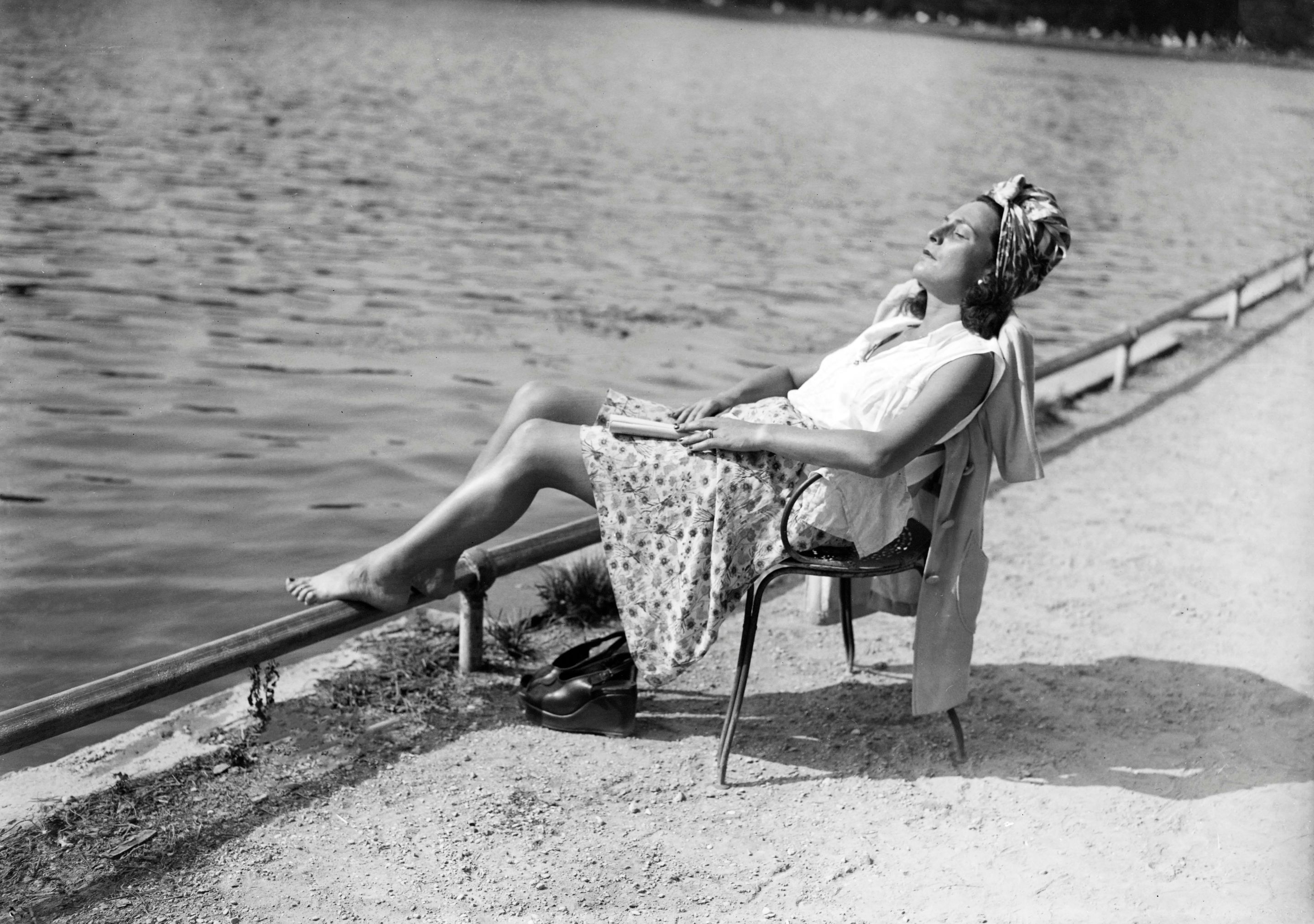Every day after work, I set off on an hour-long walk through the nearby park. I slog through a lush, rocky section of nature trail, head past the last batch of kayakers and tubers still lingering by the river in the evening, cross the narrow metal bridge atop the dam, and then choose from one of two paved paths to start the loop back around. The walks give me something like a commute in my schedule where I otherwise don't have one, the nice clear line between working and not working that so eludes the remote worker. The noise of Online finally disappears; in its place I can substitute the natural sounds of the river, or sometimes the artificial sounds of podcasters getting steamed about Jim Benning. I love my walks so much, and they're the best part of the day.
Still, entering an "in tune with the great outdoors" era has not prevented me from being "extremely vain and a baby." As we've barreled forth into the gross, sticky nadir of summer, I've had to start weighing some other concerns, namely, my personal comfort and also the way my hair looks. This is how I discovered the humble dew point, the greatest and most useful of all weather data.
"It's not the heat, it's the humidity," you will sometimes hear various local Captains Obvious say. This is true. One's experience of the weather will be shaped by how much moisture is in the air. But for too long, I depended on an unhelpful metric to tell me this: the "humidity" reading provided in weather forecasts. The great secret of meteorology (or maybe it's obvious, because humidity is expressed as a percentage) is that this "humidity" is actually short for relative humidity. Do you see the first word there? RELATIVE. That is, relative to the maximum amount of moisture the air can hold, an amount that varies with temperature; the hotter the air, the higher its capacity. Imagine two containers full of water, one the size of a drinking glass and one the size of a swimming pool. We might say they're both 100 percent full, but that doesn't tell us which has more water in it. So a reading of, say, 60 percent humidity will mean different things for the pleasantness of my walk depending on the size of the figurative container, the water-holding capacity of the air.
What would be most helpful in telling me how comfortable I'll be outside is an ABSOLUTE measure of the moisture in the air, one that can, as relative humidity can't, be read and understood meaningfully on its own. This is the dew point! The actual definition of dew point is the temperature the air needs to cool to for water vapor to begin condensing, but you don't really need to worry about that to use it. The higher the dew point, the more moisture is in the air and the grosser one feels.
So you, too, may learn the ways of dew, I've put together this Handy Dew Point Guide:
Below 60: Good!
60–65: Not great, kind of sticky, but hey, that’s life!
66–70: Pretty bad.
71–75: Extremely gross.
76+: God! God!!! I can’t bear to live!!
To find the dew point, you may have to do one extra second of hunting in your weather forecast, scrolling down past the temperature and relative humidity, which despite being a total piece of junk!!!!!, still gets top billing in many weather forecasts. The Apple weather app does not even show me the dew point, so I have abandoned the app! But you can find the dew point pretty easily on Dark Sky, the National Weather Service site, Accuweather and pretty much every other place. Some forecasts will use dew point as an input in their "Feels Like" calculations, but I feel it is best to just be able to know how to read and understand your dew point. Because—a little aside on the tyranny of "Feels Like"—I am not sure it is helpful to know that a given 93-degree day feels like a 96-degree day. Both of those seem hot, and what does a 96-degree day shorn of the elements actually feel like? The whole system is, to me, a ridiculous house of cards that doesn’t withstand the barest of scrutiny. The dew point, meanwhile, offers sweet, sweet absolutes.
Let's take our 60 percent humidity example again and calculate some dew points. On a 70-degree day, this means a good dew point of 55 degrees; on an 80-degree day, it means a not great dew point of 65 degrees; on a 90-degree day, it means an extremely gross dew point of 74 degrees. Wow! See the difference? See how your life could be made easier by simply learning the ways of the dew? If you'd rather not commit the handy guide's specific comfort gradations to memory, the gist is: below 60, that's victory; above 65, you will not thrive. Now go! Spread the gospel of the dew point!






